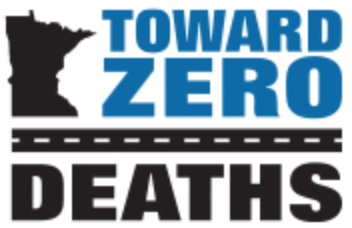
Minnesota state departments and agencies are taking innovative approaches against the chief causes of traffic-related fatalities and injuries—driver inexperience, lack of seat belt use, dangerous intersections, speeding, tailgating, and delayed medical attention after a crash has occurred. These interdisciplinary programs have been identified as priority strategies for Minnesota TZD.
Minnesota Strategic Highway Safety Plan
The Minnesota Strategic Highway Safety Plan sets an overall direction for reducing and eliminating fatal and serious injury crashes on all Minnesota roads. The plan identifies current and future safety strategies and tactics in addressing factors that consistently contribute to life changing crashes. These strategies and tactics include the "4 E" partners—Enforcement, Education, Engineering, and Emergency Medical Services and Trauma Systems.
Road Safety Plans
Safety planning aims to identify potential low- and medium-cost systematic safety projects that directly target the contributing factors in the most severe crashes on Minnesota’s trunk highway system—and that can be applied to locally owned roads as well. The strength in safety planning is that it switches the mentality from chasing severe crashes across the state to a method of preventing severe crashes before they occur.
TZD Enforcement Grant Program
The enforcement grant program provides federal funds to law enforcement agencies to conduct enhanced traffic enforcement that focuses on impaired driving, occupant protection, speed, and distracted driving.
- DPS Office of Traffic Safety calendar of enforcement events
- Visit the DPS website for more about TZD enforcement grants
TZD Safe Roads Grant Program
The TZD Safe Roads program works to increase local involvement in traffic safety issues in communities around Minnesota. Local agencies have formed TZD coalitions by partnering with others to address issues in their communities through a multifaceted approach. Safe Roads coalitions are funded by grants from the Department of Public Safety.
- Visit the DPS website for more about the TZD Safe Roads program and grants
- View contact information for all Safe Roads grantees
- Thinking of creating your own coalition? Get started here.
Statewide Trauma System
Traumatic injury is the leading cause of premature death. Deaths due to injury cost Minnesota over $2.5 billion dollars each year. An effective trauma system improves survival after a traumatic injury and reduces the cost of injury to our state.
Minnesota's trauma system is a network of hospitals and ambulance services coordinated to optimize and expedite care for seriously injured people, ensuring they are cared for at a hospital with resources matched to their needs. The trauma system designates hospitals as Level 1, 2, 3, or 4, corresponding to a hospital's resource capabilities.
